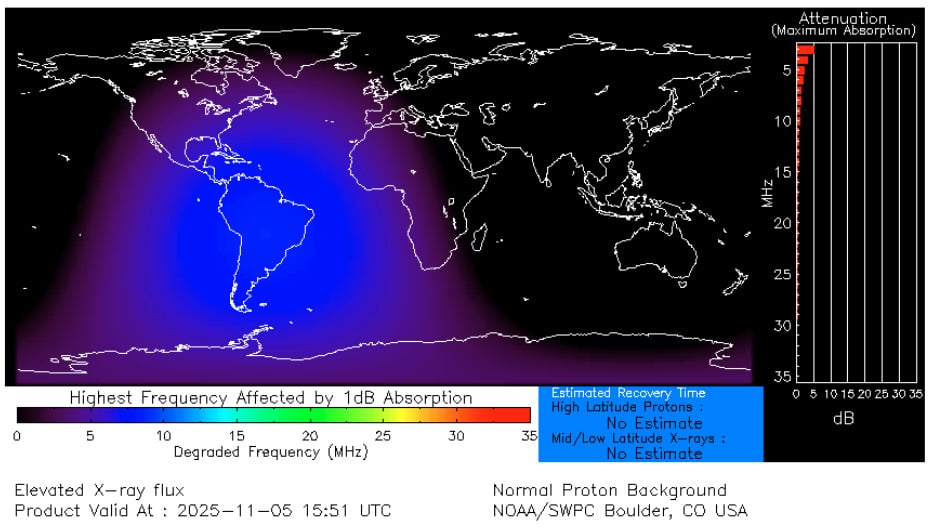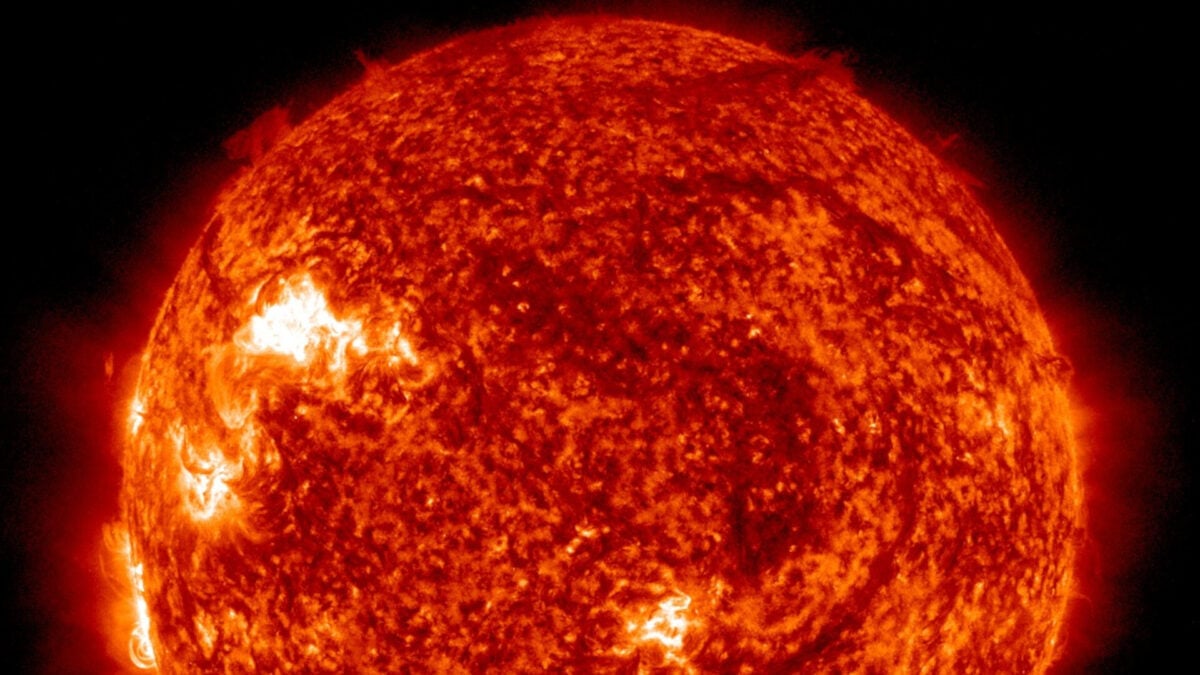The Sun is currently in the active phase of its 11-year cycle and is slowly waking up from a prolonged slumber. And it’s showing no signs of wanting to slow down.
Over the past 12 hours, our host star has unleashed three violent solar flares—intense, concentrated bursts of electromagnetic radiation—two of which were classified as X-class flares. NOAA’s Space Weather Prediction Center flagged both instances as R3 events—relatively powerful solar events capable of triggering widespread radio blackouts. The Sun erupted again this morning, producing a weaker, but still significant, M-class flare.
Already, the two X-class flares have caused radio blackouts around South America, according to NOAA. But forecasters are bracing for more solar explosions over this week. As of now, experts are keeping a close eye on Region 4274, a complex cluster of sunspots that fired off the M-class flare and one of the X-class flares.
 An image of the Sun. Region 4274 is circled in yellow. Credit: NOAA/Space Weather Prediction Center
An image of the Sun. Region 4274 is circled in yellow. Credit: NOAA/Space Weather Prediction Center
One concern is that the region is rotating into a more direct view of Earth; stellar features move from left to right from our perspective, with the region soon pointing straight at us like a shotgun. If it were to release more solar flares, the ensuing solar storm could have a greater impact on Earth’s communications. Currently, NOAA’s forecast for solar flares lies at 65% for M-class flares and 15% for the more severe X-class flares.
“This region continues to be a solar flare threat and therefore the likelihood of continued R1-R2 events and even a chance for another R3 event remains throughout the week,” reported NOAA’s Space Weather Prediction Center.
Brace for solar impact
When the Sun produces solar flares, experts check whether ensuing coronal mass ejections (CMEs)—a barrage of magnetized plasma from solar activity—have the potential to graze the Earth’s magnetic field and cause anomalies in our planet’s atmosphere. These anomalies can include disruptions to radio communications, GPS systems, and power grids, along with spectacular auroras.
 A map showing regions affected by the X-ray flux from solar flares on November 4. Credit: NOAA
A map showing regions affected by the X-ray flux from solar flares on November 4. Credit: NOAA
NOAA’s forecast report affirmed that CMEs associated with the two X-class flares weren’t headed to Earth, although solar winds may later redirect some of this mass toward Earth’s magnetic field. In an update this morning, NOAA added that the CME from today’s M-class solar flare does appear to be headed for Earth.
In addition, we may see minor G1-class storms over the next couple days that interfere with high-latitude power systems and create faint auroras in the sky.
But also, don’t freak out
It’s also possible that one of the X-class flares was stronger than initially measured. Because it came from a sunspot behind the Sun’s limb, it was partially eclipsed by the edge of the solar disk, posited Tony Phillips of spaceweather.com.
That said, these flares aren’t likely to cause anything like the plot of the 2013 film The Carrington Event. Still, geomagnetic storms caused by solar activity can affect aviation, maritime, and satellite communications, so having some warning signs in advance is a huge plus, given the projected strength of these solar events.
“There’s no reason to think this activity will subside,” Phillips wrote. “These sunspots have been flaring for weeks, producing multiple farside CMEs in late October. Now they are turning toward Earth.”

